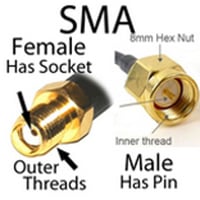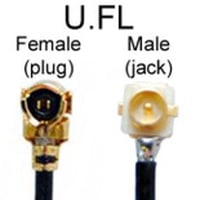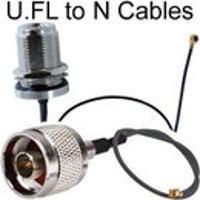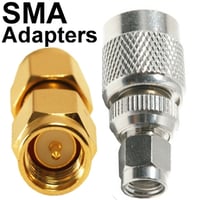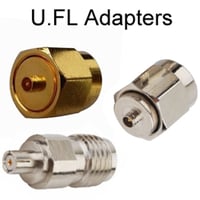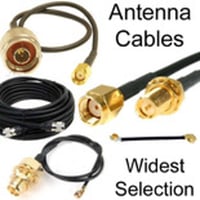for Router, Switch, Board (PCBA)
Medium-Sized Enclosures:
Suitable for Wireless Access Point, Telco gear, or Network equipment.
Enclosures are cabinets or boxes that have been specifically designed and manufactured to house and protect electrical and electronic equipment from the external environment and keep personnel that handle the electronics safe. They may also be known as:
- Electronic enclosures
- Wireless enclosures
- NEMA enclosures
- NEMA boxes
- Wireless access point enclosures
- Outdoor/Indoor enclosures
The electronic and wireless networking equipment can be mounted within the enclosure, which usually carries a hinged door with a latch that can be secured.
Our high-quality range of electronic enclosures is manufactured and distributed in compliance with global electronics-sector legislation.
Materials and components used in these enclosures are compliant with:
- Restriction of Hazardous Substances (RoHS)
- Section 1502 of the Dodd-Frank Act
- The Conflict Minerals Regulation (2021)
Electronics enclosures are used for essential electrical and networking equipment including:
- Network devices
- Circuit breakers
- Control units
- IoT sensors
- Solar power junction boxes
- Outdoor WiFi access points
- WiFi router
- USB WiFi adapters
- Outdoor measuring equipment housing
These enclosures feature structure, components, and fittings that make them resilient against impacts, harsh environmental conditions, and the ingress of moisture and particulates, a key reason for housing often expensive electronic equipment. Most enclosures will carry ratings that provide a more detailed understanding of their protective capabilities, which can help evaluate and match enclosures to the correct application. They can be made from metal or plastics, the latter being more common for wireless networking. Electronic enclosures are also accessorized in a variety of ways including the addition of fans, venting, and glands for cabling and connectors that are attached to the devices that they house.
Notable types of electronic enclosures include
- Wireless Access Point enclosures
Wireless access enclosures are designed to house access points and routers for secure installation in the vicinity of network users. Plastic housings are transparent to WiFi signals. To create a Local Area Network with optimal coverage, access points may require long-term installation in outdoor, inaccessible, or environmentally hazardous locations. Wireless enclosures discreetly and securely house the access point and associated cabling and provide easy access whenever needed. Selection of the correct wireless access point enclosure will prolong the life of your equipment, saving on cost.
- NEMA boxes
NEMA boxes are electronic enclosures that are manufactured according to specifications laid out by the National Electrical Manufacturer Association (NEMA). NEMA enclosures carry a code that defines the types of environment in which the box can be used.
- Antenna enclosures
Enclosures can be used to house outdoor antennas and their cables. Many DCE antenna enclosures feature sealed cutouts that allow the antenna to protrude out of the housing. Panel antennas enclosures can house not only the low profile antenna but also integrate the radio equipment needed as well. Enclosures for antennas usually have transceivers and amplifiers mounted alongside the antenna on the enclosure backplate.
- Network enclosures
These boxes provide robust, secure, and well-sealed housing for computer and wireless networking hardware including servers, routers, modems, switches, access points.
Key parts of a basic electronic enclosure
Each component of the enclosure is designed for optimal functionality and protection of your wireless equipment.
- Enclosure doors not only have to have a reliable seal on them to prevent the ingress of moisture and dust but should also provide suitable protection from accidental entry of hands or fingers of people who handle the enclosures. Some doors have translucent or transparent panels that allow personnel to see the devices or components inside the enclosure.
- Enclosure hinges are attached to enclosure doors, lids, and access panels to provide safe access to equipment. Many hinges for wireless enclosures are detent means that the door can be positioned and the hinge will hold while personnel access the interior of the enclosure. Other types of hinges used include lift-off hinges, self-aligning hinges, fixed hinges, friction hinges. If security is critical tamper-proof hinges can also be obtained.
- Enclosure latches and locks can be replaced on the enclosure housing so that the required level of security and closure can be obtained. Quarter-turn latches may be made of plastic or metal like steel or aluminum and can be manufactured according to ingress protection standards described further on. T-handle or swing handle latches afford easy access. If security is a priority, locking mechanisms such as a recessed key lock or safety key locks can be integrated.
- What are electronic enclosure backplates?Enclosure panels, mounting plates, and backplates are metal panels that provide a surface within the electronic enclosure for the mounting of equipment. They are usually made from plastic, aluminum, or steel and may be pre-drilled to assist in quicker assembly. They can also be used for the mounting of DIN rails.
- What are enclosure knockouts? Enclosure knockouts are pre-prepared circular or rectangular areas of the enclosure that can be precisely removed according to the specific uses of the enclosure. Removal is designed to be simply completed with a screwdriver. These knockouts provide an outlet for power cables, coaxial cables, antennas, and other components housed within or connected to the enclosure device. They are key to attaching cable glands and vents correctly. Knockouts can be positioned on all sides, the base and the back wall of the enclosure. They can be faceplate knockouts or conduit knockouts.
- Enclosure vents and filters allow air to circulate within the enclosure while the filters impede the ingress of dust. They can also be included without compromising any NEMA or ingress protection ratings. By including vents in a wireless enclosure, the heat generated by a wireless device like a router can be dissipated and various levels of air movement via vents can equalize the pressure within the enclosure and prevent the build-up of condensation.
- Outdoor roofs or rain canopies help to deflect rain and moisture away from the enclosure to limit the opportunity for moisture ingress.
- Drip trays are another strategy that can be used to divert water and keep cabling and outlets moisture-free.
Wireless enclosure materials
Several high-quality, durable polymer materials are used for enclosures for electrical and wireless networking equipment. Because these enclosures may be used to house antennas and other devices that radiate or are resonant to radiofrequency energy, they are made of plastic rather than metal which could impede or interfere with signals. Conversely, they are unsuitable if your application requires EMC shielding.
Main materials used for weatherproof enclosures
- Acrylonitrile Butadiene Styrene (ABS)
ABS is widely used as a polymer plastic material for enclosures for electronics applications. This high tensile strength material is used for a range of enclosure designs as it is cost-effective. Despite being relatively lightweight, ABS still offers protection against impacts, chemical solvents and tolerates a range of temperatures. ABS is ideal for indoor wireless enclosures, with resistance against heating, impacts, and scratching. It also has good chemical resistance against acids, alkalis, and solvents, making it suitable for industrial environments. As it is not UV stable, prolonged exposure to sunlight may cause deterioration in the condition of the enclosure so it is not typically used for outdoor enclosure installations.
- Polycarbonate (PC)
Polycarbonate is a rugged thermoplastic material for enclosures. It is a strong, impact-resistant performance material that is frequently used in manufacturing enclosures for both indoor and outdoor installation. It is naturally transparent, which can prove advantageous for creating see-through panels for enclosures. It can also be enhanced with fire retardants (self-extinguishing) and UV stabilizers that improve its weather-resistance, resistance to temperature extremes, and safety. Their temperature stability means polycarbonate enclosures are ideal for environments that have strong sunlight or solar power installations.
This lightweight polymer plastic is a strong material but can be easily scratched. It provides good protection against acids and fair protection against alkalis and solvents.
- Polypropylene
This is a lightweight thermoplastic that is used to manufacture strong and durable enclosures that have toughness, rigidity, and fatigue resistance. It is one of the most heat-stable of thermoplastics and can withstand high external and internal temperatures. Despite its strength, it is easy to machine and versatile, which is why it is in widespread use. It will not react with acids and is resistant to corrosion and has good insulating properties. Polypropylene can be used both indoors and outdoors, but it is affected by UV degradation that may shorten the lifespan of enclosures that are erected outdoors. It is also known to be flammable and will liquefy on contact with sustained fire to release potentially flammable vapors. Polypropylene enclosures may be treated with flame retardants to mitigate this risk.
- Fiberglass reinforced polyester
This plastic is also known as Glass Fibre Reinforced Polyester (GRP). It is a high-specification material that delivers premium performance in enclosures where it will withstand significant physical force, corrosion, or chemical attack. It is, therefore, more expensive than ABS or PC and also heavier and less easily machined. The plastic polymer matrix is reinforced with fiberglass, giving the material its notable impact protection. These enclosures have a rigid construction that will be advantageous in outdoor installations as they have high weather resistance and a very wide operating temperature range. GRP is fire resistant and delivers good thermal insulation to the contents of the enclosures.
Electronic enclosure accessories
A variety of accessory components are available to equip an enclosure with additional functionality. Accessories are attached to the enclosure to protect equipment and assist in the maintenance of an optimal internal environment. They assist in mounting devices, siting switches, and routing the cabling wire that enters and exits the enclosure. Accessories are also necessary if modifications like knockouts are made to the enclosure, to ensure that the protective performance is maintained.
Key electronic enclosure accessories include:
- Fans are installed within a wireless enclosure as a strategy to prevent the overheating of installed wireless networking gear. The fan will either draw in cool air or assist in removing the warm exhaust air from the enclosure via a vent with a filter.
- Heaters can be fan heaters or convection heaters and are critical for maintaining an optimal operating temperature in outdoor wireless enclosures that are installed in low-temperature conditions.
- Power outlets installed on the backplate of the box allow devices to be plugged into a 120 or 240 V outlet within the enclosure, making installation more convenient.
- Gaskets are silicone or rubber ring seals that can be used to fill the space between two opposed surfaces for a very tight seal. The use of gaskets or O-rings protects the enclosure from the ingress of dust dirt and moisture and are useful for threaded connectors and glands.
- Grommets are rubber tubes and rings that can fit into the holes and knockouts on enclosures to protect cables, wires, or components exiting through them.
- Internal and external mounting equipment is vital for ensuring that your equipment is properly secured within your enclosure and the protective unit itself is properly mounted both indoors and outdoors. Most enclosures are pre-drilled with the holes required for mounting rails, wall mounts, and bolts. Weatherproof enclosures can be mounted using either wall mount, or pole mount kits, with U-bolts or stainless steel bands.
- Glands are modular tubes that can be secured to an enclosure knockout with a bulkhead connection to create a protective outlet for cables and connectors. They are key to effective cable management and routing in an enclosure. Glands are sealed so that the cable that passes through the gland while dust and moisture ingress is prevented. Damage, strain, twisting, and pulling of cables that exit the enclosure is also prevented by using glands.
- Bulkhead connectors can be used to attach antenna cables or mount antennas within the enclosure. They create a secure conduit as the connector passes through the enclosure wall and can be tightened on both sides using O-ring sealed washers and nuts. They are available for the connector types commonly used for telecommunication and wireless networking including N connector, SMA, N, and RP-SMA.
Why are enclosures important?
Enclosures are critical for protecting networking equipment which is typically procured at a significant cause. Installation, modifications, and repair can also be costly, so ensuring that the network hardware achieves its maximum lifespan is advantageous. In addition to protecting equipment. Electronic enclosures have the following additional purposes:
- Electronic enclosures facilitate easy mounting of wireless access points and other networking equipment. Plastic wireless enclosures are designed to be securely mounted via rails or pole mounting kits. Without an enclosure, hardware like routers or modems would have to be directly attached to surfaces, increasing the risk of damage. They are prepared with the screw holes that are needed for secure mounting without compromising the integrity and performance of the enclosure.
- Wireless enclosures organize the equipment they house.This contained approach means that all the components and cabling that is associated with an access point or antenna are all housed in one place. This makes personnel access for repairs or modifications simple. Mounting is straightforward on the backplate and all attached power and coaxial cables can be directed out of the housing via the knockout outlet.
- Enclosures provide a discrete solution for mounting wireless equipment.Neutral-colored enclosures are low-profile and unobtrusive, meaning that equipment and its cabling are placed where they need to be located with a tidy presentation.
Electronic equipment needs protection from corrosion.
Corrosion is a progressive process where the metal components in electronic devices react with the environment and undergo changes that lead to damage to the metal and deterioration in the function of the electronic device it is part of. Its primary driver is moisture, as well the accumulation of dust and grime on surfaces of electronic components. Most electronics have a high packing density, meaning that corrosion becomes extensive and semiconductors and other resonant components can lose their sensitivity quickly even in mild conditions. Humidity accelerates corrosion, increasing the contact resistance of exposed connectors, and generating leakage currents and short-circuits. The diminished performance of radiofrequency equipment is often experienced before the physical evidence of corrosion becomes apparent. Once corrosion starts, it cannot be stopped. Prevention by use of an enclosure is critical to reducing the exposure of electronic equipment to environmental conditions that promote corrosion. This is called corrosion control.
Enclosures protect your equipment from environmental conditions that increase your corrosion risk including:- Dust: Particulate matter will settle on the surfaces of electronic devices and gradually ingress crevices like threads of connectors or seams of casings. The physical build-up of dust can cause mechanical and electrical dysfunctions and corrosive particulates like salts, soot and sands can combine with moisture to do damage.
- UV exposure has a gradual curing effect, known as photodegradation, on materials like plastics, causing them to harden, become inflexible, and potentially crack. This causes greater exposure to metal components that can become corroded.
- Air pollution and acid rain contain nitrogen dioxide, sulfur dioxide, and hydrogen sulfide which cause tarnishing of exposed metal surfaces. Along with moisture, these substances form a spreading corrosive patina that can cause extensive damage to affected surfaces.
- Mechanical impacts and vibrations create etching and other subtle defects in metal materials that can become a focus of moisture or dust ingress.
- Microorganisms can also colonize the surface of metallic causing a distinctive pitting or galvanic corrosion.
Housing valuable equipment in an enclosure is the most important method of protecting it from these environmental hazards. Also, manufacturing or industrial environments have the added challenges of exposure to corrosive gasses and solvents and fire risk. Many enclosures are treated with flame retardants or self-extinguishing materials to minimize fire risk. The specific fire safety ratings of enclosures will be specified on the product.
Frequently asked questions
How are the properties of different wireless enclosures evaluated and compared?
Wireless networking enclosures are typically manufactured to meet the standards or specifications outlined in leading global rating systems. By purchasing enclosures or enclosure accessories that carry these ratings, you can be assured that they will perform per their specific rating. Also, generic terms like “waterproof” or “dust-resistant” can be misleading and difficult to interpret. By using the following rating systems, enclosures can be matched to the environment where the wireless networking equipment will be installed.
These are the leading classification systems used to rate enclosures:
National Electrical Manufacturers Association (NEMA)
This leading US trade body is known for its system of gradings for electrical and electronic enclosures. They specify numbered NEMA enclosure types that offer varying types and levels of protection from many physical and environmental hazards. These are fully outlined in the NEMA 250- Enclosures for Electrical Equipment document. Key types include:
- Type 1: General purpose enclosures that are designed for indoor use, with a basic level of resistance against dust and splashes.
- Type 2:Drip-tight enclosures that have drip shields and trays. These enclosures are used in areas where condensation build-up is likely.
- Type 3: Outdoor electronic enclosures that are weather-resistant and will withstand wind-blown rain, dust, ice, and snow.
- 3R enclosures do not protect against windblown dust.
- 3S enclosures are unaffected by ice.
- 3X enclosures have enhanced corrosion resistance.
- Type 4 : Watertight enclosures that are capable of resisting the ingress of water after 10 minutes of sustained water spray.
- 4X watertight enclosures are watertight and have enhanced corrosion resistance.
- Type 5 : Dust-tight sealed NEMA boxes that prevent dust ingress.
- Type 6: Waterproof enclosures that can be submerged.
- Types 7 - 9: Enclosures that are designed for specific indoor and outdoor environmental exposures like flammable gases or explosives risk.
- Type 10:Mine Safety and Health Administration enclosures.
- Type 11: General purpose enclosures that protect against moisture, dust, and corrosion as well as corrosive gasses and oil.
Underwriters Laboratories (UL) codes
UL codes are a US-based proprietary certification that is approved by the Occupational Safety and Health Administration and accredited in the US and Canada. Enclosures that comply with the UL standards for electrical and electronic products are eligible to receive a UL listing mark.
- UL 50 are the standards that deal with Enclosures for Electrical Equipment, particularly those installed in non-hazardous locations. Structural factors like the materials used, screws, knockouts and lids, and doors to the enclosures are mentioned. They cover both indoor and outdoor enclosures and are comparable to the NEMA Types 1, 2, 3, 5, 12, 12K, and 13.
- UL 50 E deals with Enclosures for Electrical Equipment and Environmental Considerations. These standards address additional features including tensile strength, sealants, and the torque of glands of the indoor and outdoor enclosures specified in UL 50.
Ingress Protection (IP) Codes
IP Codes are an international rating system that specifies the degree of protection offered by enclosures against the intrusion of physical objects and water and dust and ingress. Its ratings correspond to IEC standard 60529 and the European Standard EN 60529. IP codes are made up of two numbers and two optional letters that describe the level of protection delivered by an enclosure:
First digit: specifies the degree of solid particle protection and ranges from “no protection” that is indicated by an X, to 6 which means that the enclosure is “dust-tight”. These numerical ratings also specify that an enclosure will protect personnel from inadvertently accessing moving, sharp or live parts within the enclosure.
Second digit: specifies the level of protection against the ingress of liquids.
- “X” indicates that an enclosure does not protect against moisture.
- 1: protection against water dripping on the enclosure.
- 2: protection in a 15 degree tilted position against dripping water.
- 3: spraying water protection.
- 4: protection against splashing water.
- 5: protection water jet spray against the enclosure.
- 6: protection against powerful water jets.
- 7: protection from water ingress when the enclosure is immersed in 1 meter of water for 30 minutes.
- 8: fully water-resistant: protection from water ingress when the enclosure is immersed in more than 1 meter of water for more than 30 minutes.
First supplementary letter: specifies the protection the enclosure provides to the individuals who handle it.
Second supplementary letter: specifies the protective properties of the enclosure in niche environments including where there is high voltage or motion.
In conclusion
Enclosures are a critical investment for the safeguarding of your networking infrastructure. Selection of the appropriate wireless enclosure means that hardware can be securely housed and mounted with outstanding resilience against the common environmental factors that lead to corrosion. This will not only prolong the functional life of equipment such as access points and routers but also make the installation and maintenance of electronic devices with the enclosure straightforward.
LEARN MORE:

